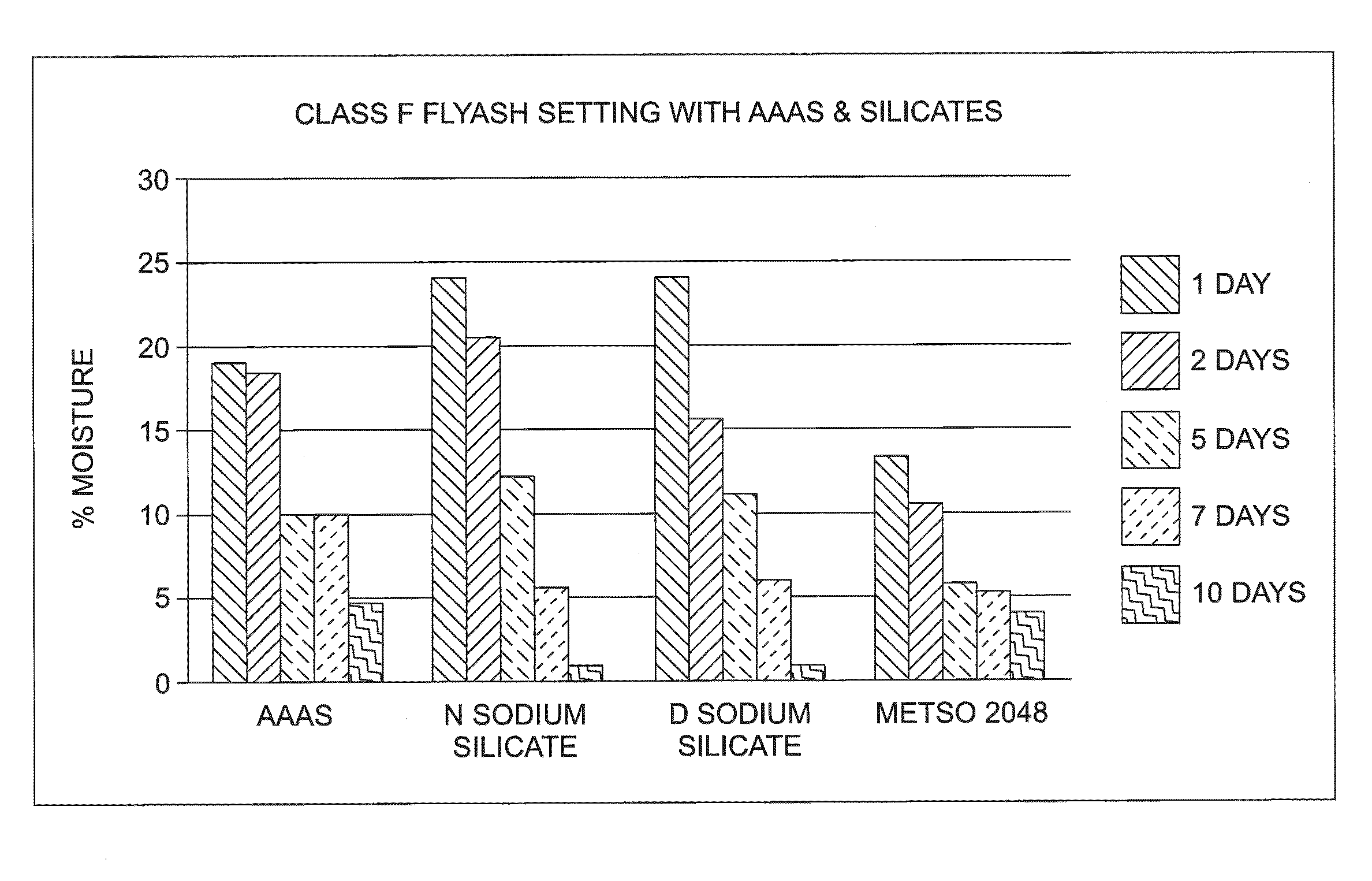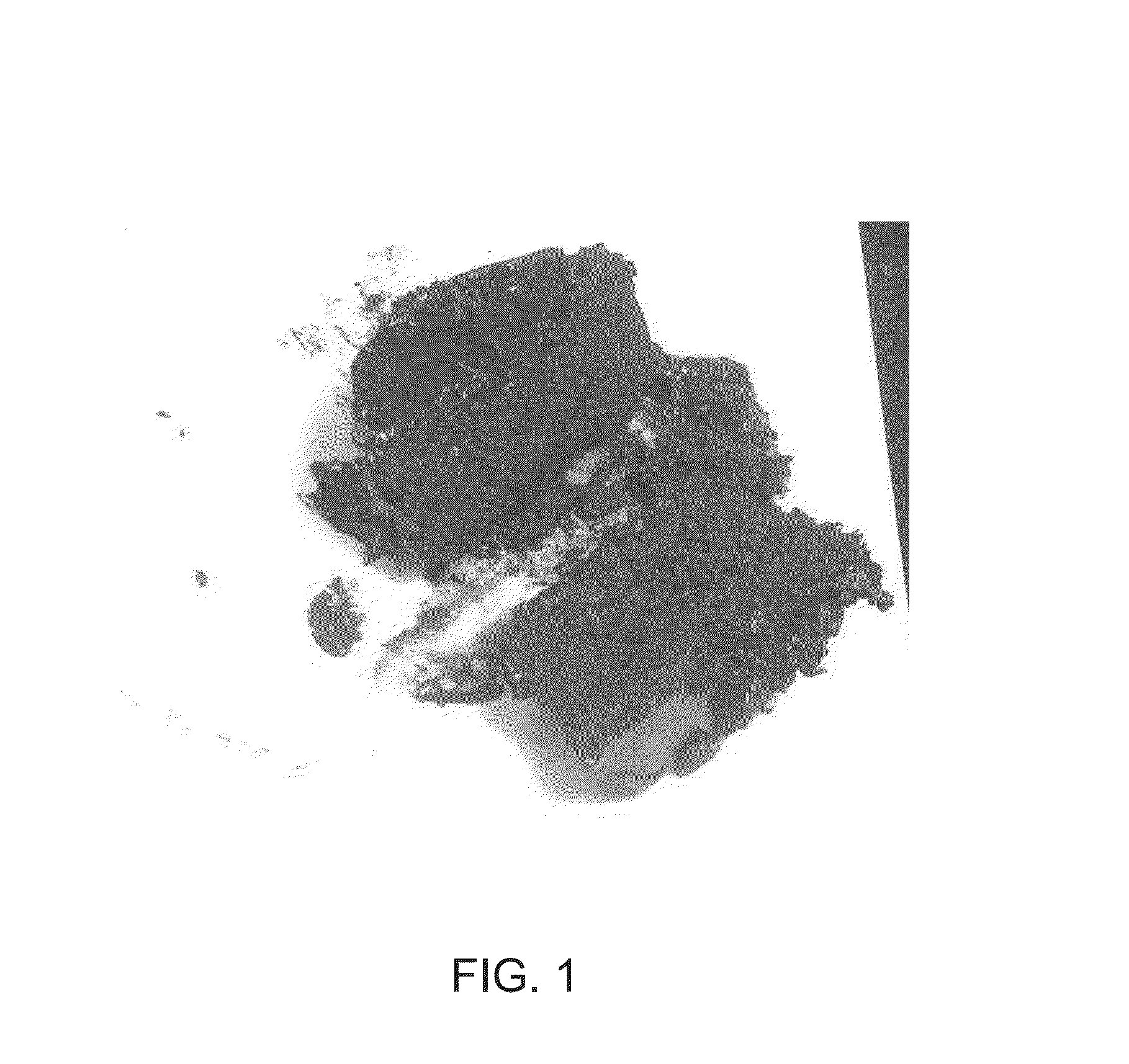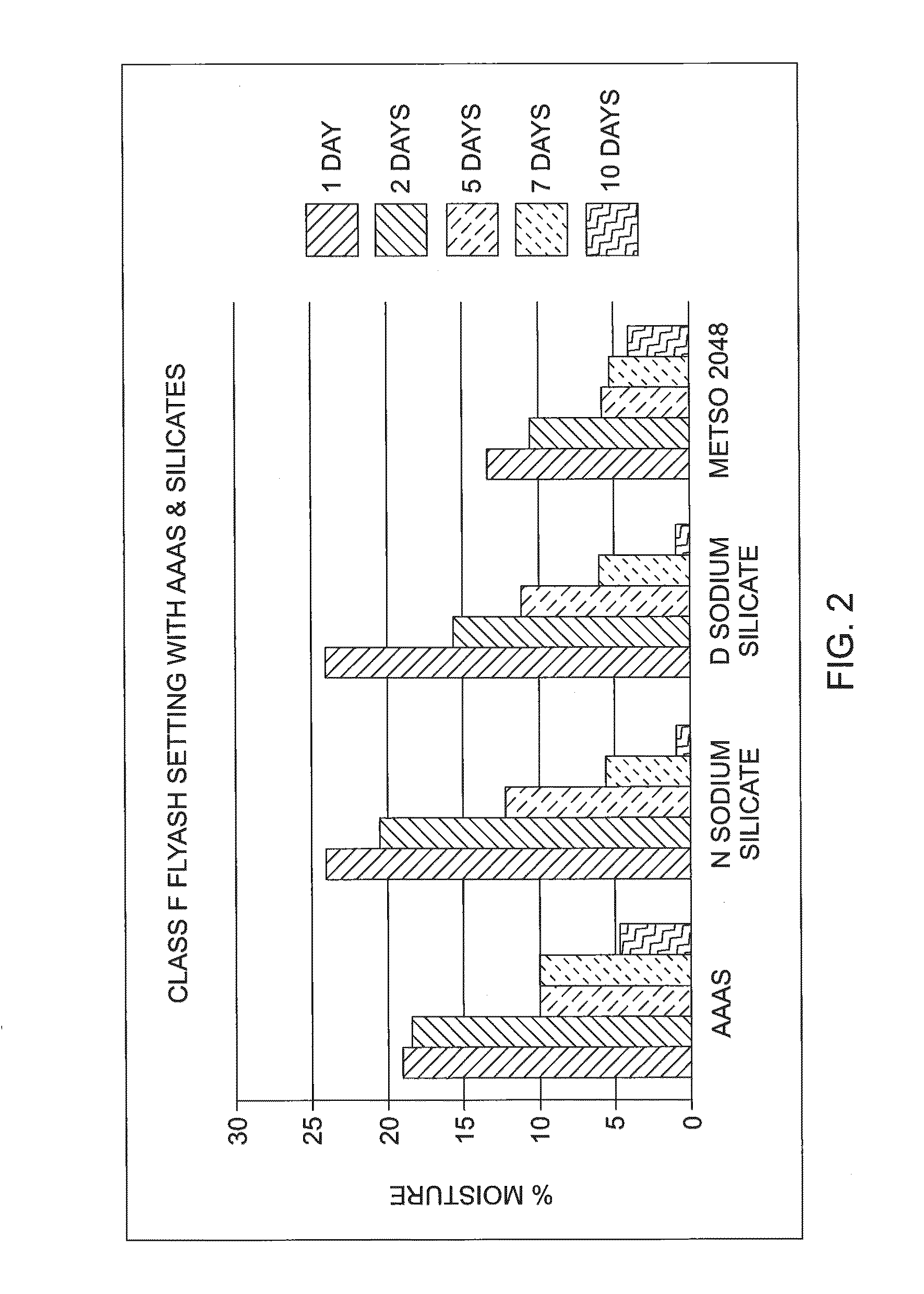Use of aqueous alkali aluminosilicate for profile modification, water control and stabilization
a technology of aqueous alkali aluminosilicate and profile modification, applied in the direction of silicate, sealing/packing, borehole/well accessories, etc., can solve the problems of severe loss of strength, difficult control of set times, limitations of alkali silicate-based technology, etc., to achieve more controllable set, high mechanical strength, and high tolerance to contaminants
- Summary
- Abstract
- Description
- Claims
- Application Information
AI Technical Summary
Benefits of technology
Problems solved by technology
Method used
Image
Examples
example 1
[0054]An aqueous sodium aluminosilicate was prepared having the previously indicated composition. The aluminosilicate system solution was mixed with deionized water at the indicated weight to weight ratios. A Brookfield PVS rheometer was used to measure crystallization time. Viscosity readings were taken at predetermined time intervals at a shear rate of 5.11 s−1. Prior to crystallization the aqueous alkali aluminosilicate increased in viscosity. Viscosity changes were monitored as a function of time, temperature and chemical additives.
[0055]Aqueous alkali aluminosilicate can be made to crystallize by diluting with water. Table 2 a indicates the time for crystallization at 45° C. In contrast, aqueous sodium silicate is infinitely soluble in fresh water. Table 2B shows the long term properties of a 1:1 weight to weight mix of aqueous alkali aluminosilicate to water.
[0056]
TABLE 2ACrystallization Time vs. dilution with waterAqueous SodiumTime toTest #AluminosilicateWaterRatioCrystalliz...
example 2
[0058]Example 2 measured the effect of temperature on rate of crystallization at a constant ratio of aqueous sodium aluminosilicate to water. The results are shown in Table 3.
[0059]
TABLE 3Aqueous SodiumAluminosilicateWaterTime toTest #(g)(g)TemperatureCrystallization115 g15 g25° C.210minutes215 g15 g45° C.25minutes315 g15 g65° C.5minutes415 g15 g85° C.minute
[0060]By knowing the downhole temperature, the rate of crystallization can be modified by any number of techniques including adjusting the level of dilution of the aqueous aluminosilicate with water, increasing the alkalinity of the solution, and altering the relative composition of SiO2 to Na2O to Al2O3.
example 3
[0061]Example 3 shows the crystallization rate at a constant ratio of aqueous sodium aluminosilicate can be slowed by increasing alkalinity. A 50% solution of NaOH was added to water and then mixed into the aqueous sodium aluminosilicate. Reaction temperature was 45° C. The results are shown in Table 4.
[0062]
TABLE 4Aqueous SodiumAluminosilicateWaterNaOH (50%)Time toTest #(g)(g)(g)Crystallization115 g15 g—25 minutes215 g15 g0.75 g75 minutes
PUM
| Property | Measurement | Unit |
|---|---|---|
| molar ratio | aaaaa | aaaaa |
| weight ratio | aaaaa | aaaaa |
| weight ratio | aaaaa | aaaaa |
Abstract
Description
Claims
Application Information
 Login to View More
Login to View More - Generate Ideas
- Intellectual Property
- Life Sciences
- Materials
- Tech Scout
- Unparalleled Data Quality
- Higher Quality Content
- 60% Fewer Hallucinations
Browse by: Latest US Patents, China's latest patents, Technical Efficacy Thesaurus, Application Domain, Technology Topic, Popular Technical Reports.
© 2025 PatSnap. All rights reserved.Legal|Privacy policy|Modern Slavery Act Transparency Statement|Sitemap|About US| Contact US: help@patsnap.com



